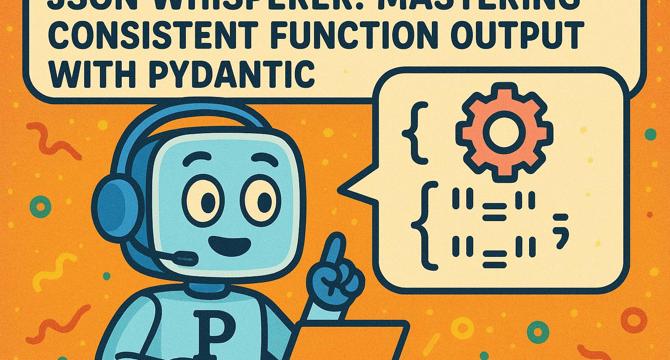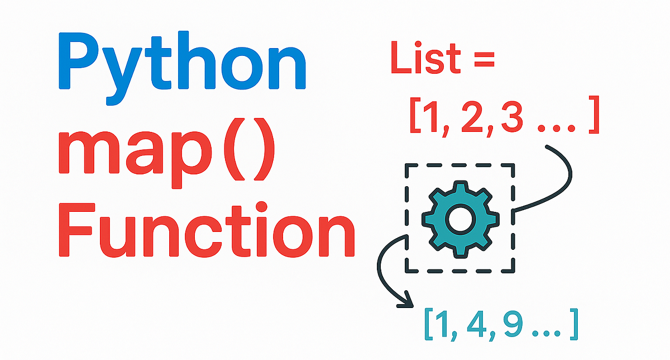Python
Dev
1M
177

Image Credit: Dev
How to Send Byte Arrays from Frida JS to Python Script
- Frida allows you to run JavaScript code within the context of a target application, enabling interaction with its components.
- When sending byte arrays from Frida JS to a Python script, a common error like 'Error: expected a pointer' may occur.
- To resolve this error, convert the byte array to a Base64 string in JavaScript before sending it back to Python.
- In Python, decode the Base64 string back into a byte array for further processing and effective data handling in hybrid environments.
Read Full Article
10 Likes
Dev
1M
446

Image Credit: Dev
How I Used Python to Almost Crash ChatGPT
- An individual conducted an experiment using Python to test the limits of ChatGPT's response generation capabilities.
- The experiment included exploring how ChatGPT handles recursion, large inputs, and nested logic, as well as practical limitations such as length and memory.
- Observations revealed that ChatGPT has hard limits on token counts, context management weakens with longer threads, and the model fails for prompts exceeding certain character limits.
- The key learnings highlighted ChatGPT's finite token limits, its abstraction of recursive prompts, and the importance of context management for longer sessions.
Read Full Article
26 Likes
PlanetPython
1M
414

Image Credit: PlanetPython
Python GUIs: Build an Image Noise Reduction Tool with Streamlit and OpenCV ��� Clean up noisy images using OpenCV
- Image noise is a random variation of brightness or color in images, making it harder to discern finer details in a photo.
- Noise reduction improves the visual appearance of photos, crucial in image analysis pipelines.
- Multiple algorithms are available for denoising images, and the tutorial focuses on using OpenCV algorithms within a Streamlit app.
- Users can upload images, choose noise reduction algorithms (e.g., Gaussian Blur, Median Blur), adjust strength, and download the processed image.
- The tutorial covers setting up the working environment, building the app outline, uploading images, and understanding how Streamlit works.
- It demonstrates converting uploaded images for processing, configuring noise reduction algorithms using sliders, and applying algorithms like Gaussian Blur and Median Blur.
- The tutorial discusses noise reduction methods like Minimum Blur and Maximum Blur for specific noise types, along with Non-Local Means Denoising.
- Improvements include adjusting layout for better user experience and enabling image download in different formats (PNG, JPEG).
- Code structure is enhanced by segregating UI and processing logic into separate functions for better readability and maintenance.
- In conclusion, the tutorial showcases building an interactive noise reduction app using Streamlit and OpenCV, offering a user-friendly way to enhance images.
Read Full Article
24 Likes
Dev
1M
118

Image Credit: Dev
An Introduction to Python: The Versatile Programming Language
- Python is a high-level, interpreted programming language known for its readability, simplicity, and power. It supports multiple programming paradigms and has evolved into a versatile tool across various domains.
- Python’s benefits include easy learning curve, extensive libraries/frameworks for data science, machine learning, web development, a large active community, cross-platform compatibility, and seamless integration with other technologies.
- Python finds applications in web development, data science, machine learning, automation, game development, and education due to its flexibility and robust ecosystem.
- To learn Python, beginners can start with tutorials covering basic syntax, data types, functions, loops, object-oriented programming, and practice through projects and coding challenges. Online resources like Codecademy, freeCodeCamp, and Coursera offer interactive platforms for learning.
Read Full Article
7 Likes
Discover more
Medium
1M
191

Fatal Python error: init_fs_encoding: failed to get the Python codec of the filesystem encoding…
- A fatal Python error occurred with the message 'init_fs_encoding: failed to get the Python codec of the filesystem encoding.'
- The user attempted to create a new virtual environment using Python 3.8.5 and encountered the same error.
- In the uwsgi.ini file, the PYTHONHOME environment variable was set to '/home/env3/educ', and the suggestion was to check if it exists.
- The solution provided was to either remove the PYTHONHOME environment variable or set it to a different value, based on a CPython developer's confirmation on this approach.
Read Full Article
11 Likes
Medium
1M
2k

Image Credit: Medium
Creating self-healing spiders with Scrapling in Python without AI (Web Scraping)
- Web Scraping often faces challenges like rapidly changing website structures, unstable selectors, and anti-bot measures.
- Generic Web Scraping introduces more issues, such as extreme website diversity and identifying relevant data across various websites.
- AI-based web scraping is becoming popular due to its ability to tackle these challenges efficiently.
- Scrapling, a Python library, provides an alternative approach to AI-based scraping by offering an undetectable, high-performance solution.
- Scapling's Automatch feature helps in adapting to website changes intelligently without relying on AI.
- The library offers faster parsing, lower memory usage, and a simpler API compared to BeautifulSoup.
- It introduces methods for efficient selection like finding elements by content, similarity, and filters.
- Scraping also offers browsers like PlayWrightFetcher and StealthyFetcher for undetectable scraping.
- The library provides flexible solutions for challenges like extracting specific data without using AI.
- Scrapling is continuously evolving, with plans to add features like automated pagination extraction.
Read Full Article
28 Likes
Hackernoon
1M
154

Image Credit: Hackernoon
This One Python Tool Fixed My AI's Function-Calling Chaos
- Using Pydantic for type validation, JSON Schema for structural definition, and proper error handling can create robust applications with consistent AI outputs, reducing the parsing complexity.
- Inconsistent AI function outputs can lead to errors and edge cases, making it crucial to ensure precise data structure alignment.
- The tension between natural language flexibility and structured data rigidity can be resolved by implementing a validation layer like Pydantic.
- Pydantic bridges the gap between dynamic data and strict function expectations by enforcing type annotations and validating data formats.
- Pydantic helps convert AI outputs to expected formats, handling discrepancies and ensuring consistency in data processing.
- Implementing Pydantic validation in function calling workflows significantly reduces error rates and accelerates development by eliminating the need for defensive code.
- Using Pydantic models to define JSON Schema for AI understanding and validating AI outputs streamlines the input-output pipeline and enhances data reliability.
- The process of converting natural language inputs to validated data outputs through Pydantic validation demonstrates a reliable framework for consistent function outputs.
- Pydantic validation ensures that data arriving at functions matches expectations, reducing errors and increasing development efficiency.
- The pattern of using Pydantic with AI function calling can be applied in various domains like customer support, calendar management, e-commerce, healthcare, and finance for structured data extraction.
- AI function calling with strict output validation acts as a bridge between natural language complexity and system orderliness, enabling reliable, structured data processing.
Read Full Article
9 Likes
Dev
1M
159

Image Credit: Dev
🔁 1128. Number of Equivalent Domino Pairs – Explained with Code in C++, JavaScript, and Python
- The problem involves finding the number of equivalent pairs of dominoes in a given list.
- The solution involves normalizing the dominoes and using a hash map to efficiently count the pairs.
- The optimal solution is implemented in C++, JavaScript, and Python.
- The time complexity is O(n), and the space complexity is O(1) due to a fixed array size.
Read Full Article
9 Likes
Dev
1M
41

Image Credit: Dev
How to Build a Simple Python Video Stream Server with aiortc?
- Setting up a simple video stream server using Python and the aiortc library involves integrating Python and HTML/JavaScript components for a local network setup.
- One common issue faced by developers when working with WebRTC is the ValueError related to Session Description Protocol (SDP) errors, particularly when SDPs lack valid track information causing connection failures.
- To build a Python video streaming server with aiortc, you need to install dependencies and utilize Python code to stream video, while the corresponding JavaScript code connects to the server to receive the video stream.
- Troubleshooting SDP issues requires ensuring valid track information in SDPs, correct setup for handling offers and answers, and checking network configurations for ICE candidate exchange.
Read Full Article
2 Likes
Dev
1M
4

Image Credit: Dev
Get the Weather: A Clean and Practical Python Script
- Learning Python with practical projects like building a weather-fetching script using the OpenWeatherMap API can enhance your skills.
- This project teaches you how to work with APIs, process JSON data, structure code clearly, and handle errors gracefully.
- The script provided fetches real-time weather data for a specified city, showcasing logic and data handling in Python.
- By starting with such utility projects, you can potentially expand into more complex tools like weather dashboards or automation systems.
Read Full Article
Like
Dev
1M
282

Image Credit: Dev
This Python Script Found 1,237 Leaked Passwords in 3 Minutes
- A Python script discovered 1,237 leaked passwords in under three minutes, highlighting the prevalence of data leaks and breaches in today's ecosystem.
- The article provides an in-depth guide with explanations, code samples, real-world statistics, resources, and tips to enhance one's toolkit for identifying exposed credentials.
- Data breaches surged in 2024, with 5.5 billion compromised accounts, emphasizing the critical importance of automated leak-scanning to mitigate risks.
- The architecture overview involves fetching sources from platforms like Pastebin and GitHub Gists, skipping duplicates, extracting secrets using regex patterns, and storing findings for analysis.
- Parallel processing techniques are employed for speed, enabling the script to efficiently scan URLs for credentials using ThreadPoolExecutor.
- The process includes alerting mechanisms through SMTP Email and Slack Webhook, ensuring timely notifications for identified credentials.
- Metrics and dashboard capabilities can track pastebin scanning, credentials found, and alerts triggered, offering insights into the scanning performance and outcomes.
- The article concludes with a real-world example of uncovering 1,237 credentials in just 3 minutes, prompting readers to replicate the script, customize it, and integrate it into their security operations.
- It emphasizes the significance of fast leak detection tools for proactive security measures and directs readers to python.0x3d.site for additional Python-powered security tools and support.
- In addition to the security-focused content, the article features tailored learning kits and courses related to hacking evolution, secret operating systems, programming languages, and tech history for curious minds to explore.
- The article offers a blend of practical Python scripting insights and educational resources, encouraging readers to delve deeper into cybersecurity practices and expand their technical knowledge.
Read Full Article
17 Likes
Dev
1M
218

Image Credit: Dev
Understanding Python Concurrency: Multithreading VS AsyncIO
- Python programming offers multithreading for concurrent programming to enhance program execution efficiency, especially in I/O-intensive tasks.
- The threading module facilitates multithreading programming in Python by providing tools for creating and managing threads.
- Code practice example showcases multithreading for parallel image downloading using the threading module.
- Thread safety and lock mechanisms are crucial in multithreading to prevent race conditions and ensure proper resource access.
- Multithreading is ideal for I/O-intensive tasks but may face limitations in CPU-intensive scenarios due to Python's GIL.
- Exception handling in multithreading requires careful consideration to manage exceptions raised in different threads.
- Performance optimization of multithreading can be achieved through techniques like thread pools and efficient queue management.
- Asynchronous programming with coroutines in Python asyncio module offers efficient handling of I/O-intensive tasks without creating multiple threads.
- Comparison between asynchronous programming and multithreading highlights their respective performance and complexity aspects.
- Advantages of asynchronous programming include high concurrency and resource efficiency, suitable for I/O-intensive tasks.
Read Full Article
13 Likes
Marktechpost
1M
186

Meta AI Releases Llama Prompt Ops: A Python Toolkit for Prompt Optimization on Llama Models
- Meta AI has launched Llama Prompt Ops, a Python toolkit for prompt optimization on Llama models, aimed at enhancing prompt effectiveness for developers and researchers.
- Prompt optimization is essential for maximizing the performance of large language models, as prompts tailored for one model may not work well on another due to architectural differences.
- Llama Prompt Ops offers automated prompt transformations, enabling smoother cross-model prompt migration and facilitating better compatibility with Llama-based LLMs.
- The toolkit features a prompt transformation pipeline, support for multiple source models, robust test coverage, and clear documentation to aid developers in fine-tuning prompts for improved outputs.
Read Full Article
11 Likes
Medium
1M
109

Image Credit: Medium
Understanding “map()” in Python…
- The map() function in Python applies a specified function to each item of an iterable and returns a map object.
- Advantages of using map() include using lambda functions, converting strings to integers, adding elements from two lists, and cleaning up data.
- While map() is powerful, list comprehensions can be more intuitive for straightforward operations.
- Understanding the functionality and applications of map() enables writing cleaner and more efficient code in Python.
Read Full Article
6 Likes
For uninterrupted reading, download the app